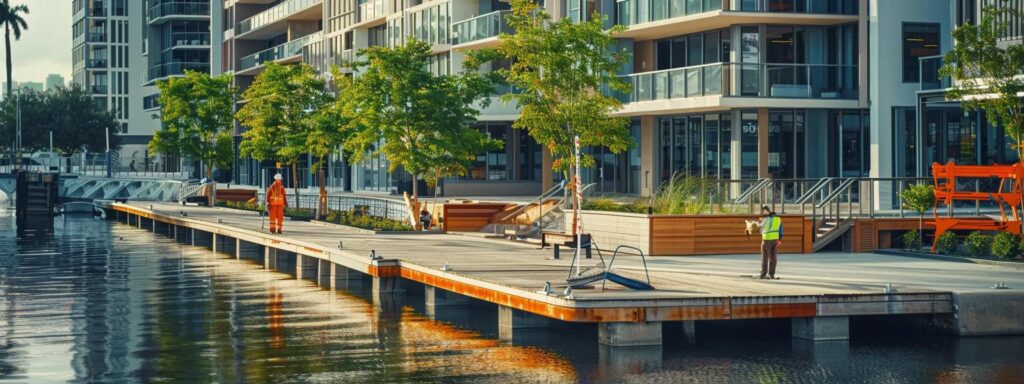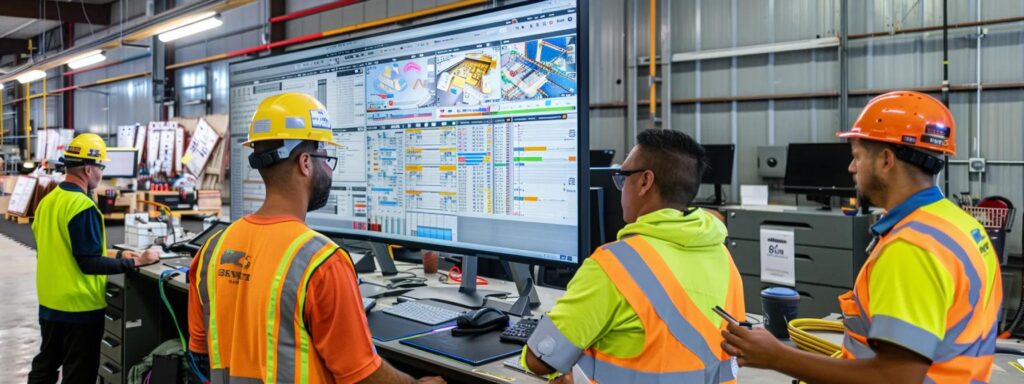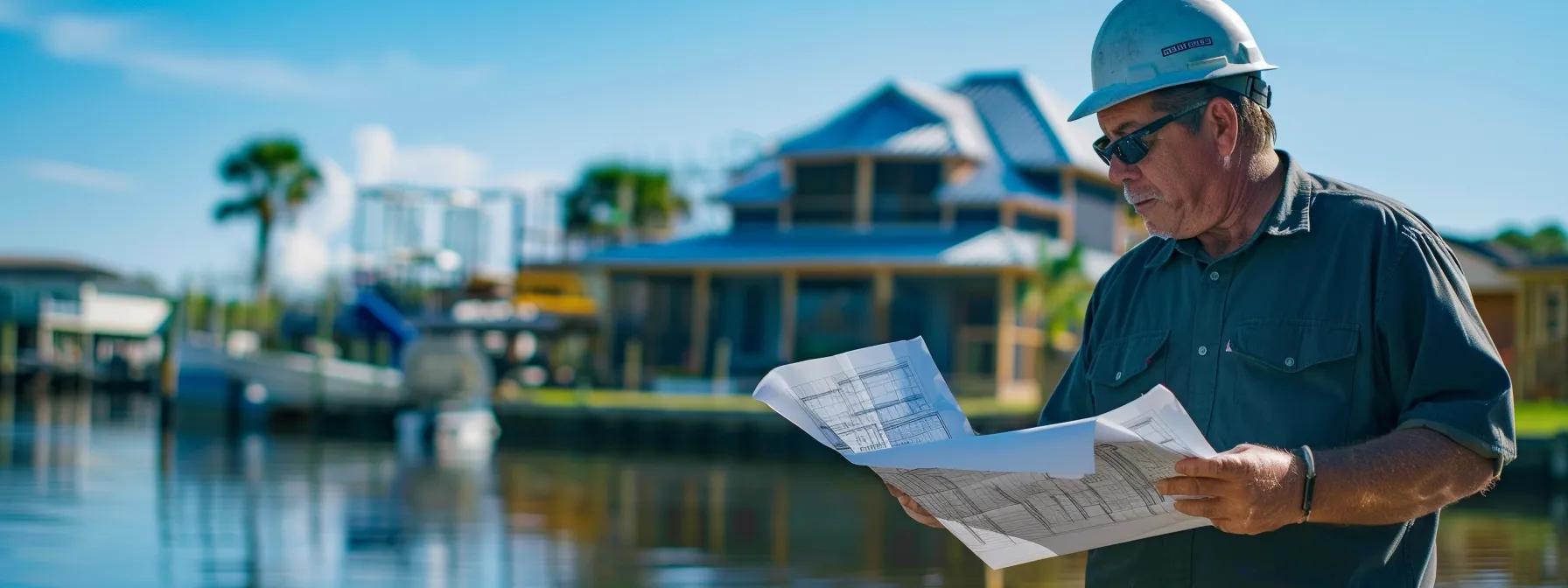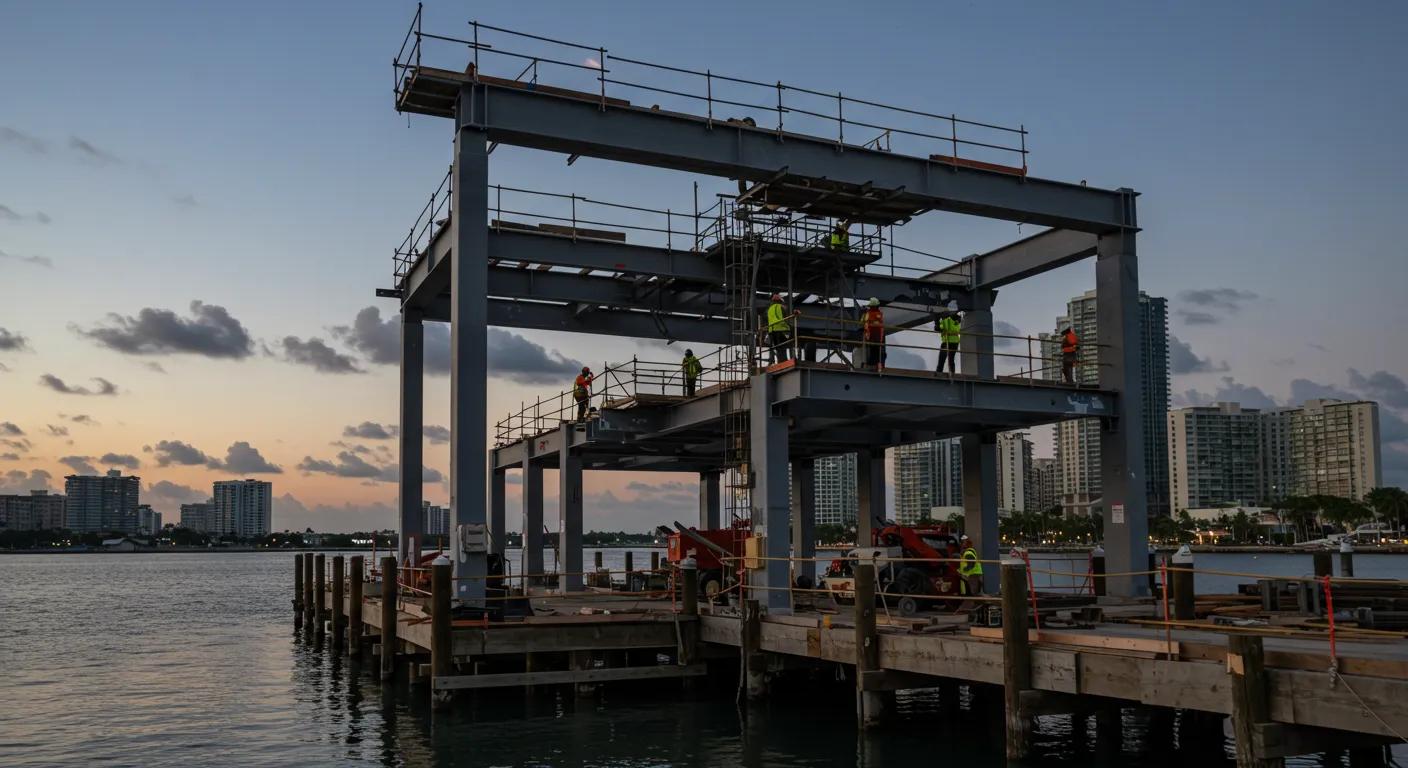Essential Dock Design Best Practices Revealed
The design of a loading dock is critical to ensuring the smooth operation of warehousing, distribution centers, and logistics hubs. This article presents best practices to improve efficiency, safety, environmental sustainability, and staff training at your dock. Whether you face congestion, equipment accessibility issues, or outdated layouts, these actionable solutions blend industry expertise with modern technology to maximize operational efficiency, reduce downtime, and boost customer satisfaction. Let’s explore each area in detail.
Optimize Layout for Streamlined Dock Operations
Optimizing your dock layout is essential for smooth, uninterrupted flow of goods and personnel. Key considerations include adequate space for trucks, proper lane widths, and sufficient maneuvering space for vehicles and equipment such as forklifts. Integrating effective design principles minimizes congestion and speeds up order fulfillment.
Assess Dock Size and Space Utilization for Maximized Flow
Begin by evaluating your dock’s dimensions and available square footage compared to shipment volume. Ensuring enough clearance for standard trucks and equipment reduces delays and bottlenecks during peak periods. Using measuring tools or 3D simulation software can help visualize traffic flow and identify space-saving opportunities.
Design Efficient Traffic Patterns to Reduce Congestion
Clear traffic routes for incoming and outgoing vehicles are vital. Design one-way lanes, designated parking, and clearly marked turns to minimize intersecting paths and delays. Such layouts can reduce idle time by up to 25%, ensuring maximum efficiency even during high-volume periods.
Prioritize Accessibility for Cargo Handling and Personnel
Ensure that the dock layout provides ample access points for cargo equipment and easy pedestrian movement. Proper placement of loading ramps, wide pedestrian paths, and clear emergency exits reduce the risk of injuries and allow for swift adjustments in operations.
Implement Clear Signage for Easy Navigation Around the Dock
Effective signage is key for smooth operations. Use large, reflective signs to indicate directions, speed limits, safety warnings, and staging areas. Digital signage can also update staff in real time regarding schedule changes and safety instructions, reducing mistakes and improving communication.
Arrange Equipment for Quick Access and Minimized Delay
Organize dock levelers, pallet jacks, and forklifts in strategic, clearly marked zones to ensure fast retrieval and deployment. A color-coded system or clear labeling helps all staff, including new hires, quickly locate and mobilize equipment, thereby reducing delays.
Review and Adjust Layout Based on User Feedback Regularly
Dock operations evolve, so regular reviews and feedback from truck drivers, dock personnel, and logistics managers are essential. Periodic audits complemented by performance data, such as turnaround times and accident rates, help fine-tune the layout to maintain continual operational efficiency.
Incorporate Advanced Technology in Dock Design

Advanced technology integration significantly enhances coordination and safety standards. Automation and tracking systems not only streamline processes but also provide real-time performance metrics.
Explore Automated Systems for Enhanced Loading Efficiency
Automated systems such as conveyor belts, robotic dock levelers, and AGVs pull trailers into position, reducing human error and speeding up loading and unloading. These technologies can improve loading times by around 30% and reduce product damage and shrinkage.
Utilize Cargo Tracking Solutions to Improve Inventory Management
Modern cargo tracking using barcodes, RFID, or GPS technology monitors shipment locations in real time. Accurate tracking helps optimize inventory levels, coordinate shipment timing, and prevent misplaced items while enabling predictive analytics to address potential issues early.
Consider Dock Scheduling Software for Better Coordination
Dock scheduling software coordinates truck arrivals and shipments, reducing waiting times and improving throughput. Integrated with ERP systems, such software allows for pre-scheduled appointments and real-time rescheduling, directly enhancing customer satisfaction.
Integrate Safety Systems for Risk Reduction and Compliance
Safety systems like automated alerts, intrusion detection, and emergency shutoff mechanisms not only protect personnel and equipment but also ensure compliance with regulatory guidelines. Implementing these systems can significantly lower incident rates and reduce insurance costs.
Adopt Real-Time Monitoring Tools for Operational Insights
Deploy sensors and cameras to continuously monitor traffic flow, congestion points, and equipment status. Analyzing this data helps managers swiftly address issues, boosting operational transparency and response times.
Assess Tech Upgrades Based on Industry Best Practices
Regularly review emerging dock management technologies and benchmark your upgrades against industry standards. This ongoing evaluation ensures the dock remains current and future-proof while reducing downtime and operational expenses.
Ensure Safety Standards Are Met in Dock Design
Safety is a top priority in dock design to reduce accidents, lower liability, and boost workforce morale. Meeting regulatory guidelines and installing robust safety features are critical.
Follow Regulatory Guidelines for Dock Construction and Use
Adhere to local building codes, OSHA standards, and environmental laws to protect against structural failures, overcrowding, and hazardous material mishandling. Regular inspections and audits ensure ongoing compliance and favorable regulatory reviews.
Implement Safety Features for Personnel Protection
Incorporate guardrails, safety nets, and proper lighting along with designated PPE stations and emergency procedure instructions. Automated emergency shutdown systems also help safeguard lives and assets during unforeseen events, reducing accident rates.
Conduct Regular Safety Audits and Training Sessions
Regular audits of all dock features—from structural integrity to equipment functionality—combined with periodic training sessions ensure that employees are informed about best practices and emergency procedures. This culture of continuous safety awareness helps prevent incidents.
Install Safety Barriers and Warning Systems at Key Areas
Install barriers in high-traffic zones and along elevated platforms to prevent falls and collisions. Warning systems such as alarms or digital displays can quickly alert workers of hazards, minimizing errors and accidents.
Use Non-Slip Surfaces for Improved Traction and Safety
Apply non-slip coatings on floors and ramps to prevent slips and falls, especially in wet or oily conditions. Regular maintenance of these surfaces is essential to sustain their effectiveness and ensure a safer working environment.
Design Escape Routes and Emergency Protocols Clearly
Ensure escape routes are unobstructed, clearly marked, and regularly drilled. Updated emergency protocols that reflect changes in equipment or layout can guide workers swiftly to safety during a crisis.
Focus on Environmental Sustainability in Dock Design

Environmental sustainability in dock design helps reduce costs and lower the environmental footprint. Incorporating eco-friendly practices creates a more responsible and efficient operation.
Use Eco-Friendly Materials for Dock Construction and Maintenance
Choose materials such as recycled steel, sustainable composite decking, and low-VOC paints to minimize harmful emissions during production and use. These materials not only extend the dock’s lifespan but also support green building certifications and boost your business reputation.
Implement Waste Management Practices for Cleaner Operations
Segregate hazardous and non-hazardous waste, recycle materials when possible, and establish designated disposal zones. Effective waste management reduces environmental impact while organizing the work area and cutting operating costs.
Consider Energy-Efficient Equipment to Reduce Consumption
Upgrade to LED lighting, energy-efficient dock levelers, and HVAC systems to minimize energy use. These improvements provide immediate energy savings and contribute to long-term carbon emission reductions while enhancing overall dock performance.
Utilize Green Spaces and Natural Elements in Design
Incorporate landscaping elements like native plants, green walls, or permeable pavements to improve air quality and manage stormwater runoff. Integrating natural elements not only boosts visual appeal but also lowers ambient temperatures and creates a more balanced, eco-friendly work environment.
Monitor and Mitigate Environmental Impact Regularly
Use sensors and analytics tools to track energy, waste, and water usage. Regular environmental audits help you identify areas for improvement and ensure that your sustainability strategies are effective.
Engage Stakeholders in Sustainability Efforts at the Dock
Involve employees, suppliers, and customers in sustainability initiatives through training sessions, workshops, and communication campaigns. A collaborative approach encourages innovation and reinforces environmental responsibility across the board.
Train Staff Effectively for Optimal Dock Operations
Staff training is the cornerstone of an efficient dock, enabling employees to handle equipment safely and manage complex workflows. Comprehensive training programs play a significant role in maintaining high operational standards.
Provide Comprehensive Training on Dock Procedures
Offer thorough training on equipment operation, handling hazardous materials, and emergency protocols to lay a strong foundation for dock operations. Regular sessions ensure new updates or procedures reach all staff promptly.
Encourage Continuous Learning for Staff Development
Foster an environment where employees seek certifications, attend workshops, or take online training courses. Mentorship and cross-training initiatives encourage knowledge sharing, ultimately boosting overall team competence and performance.
Implement Simulation Drills for Emergency Readiness
Conduct regular simulation drills that mimic various emergency scenarios, from equipment malfunctions to evacuations. These drills, along with post-drill feedback and record-keeping, sharpen responses and enhance overall safety.
Foster Teamwork to Enhance Communication and Efficiency
Promote a collaborative culture with organized team meetings and role-specific briefings. Effective communication reduces errors and improves turnaround times, thereby streamlining dock operations.
Evaluate Staff Performance With Constructive Feedback
Regular performance reviews based on safety records, efficiency metrics, and customer feedback provide constructive insights. Tailoring training programs to address weaknesses fosters continuous improvement and overall operational success.
Update Training Programs Based on Technological Advancements
As technology evolves, so should your training materials. Update training sessions to include new software systems, updated machinery protocols, and emerging automated processes to ensure staff remain current and capable.
Create an Efficient Maintenance Schedule for the Dock

A well-planned maintenance schedule preserves the dock’s integrity and functionality by preventing unplanned downtime and extending equipment life.
Develop Routine Inspections to Identify Repairs Early
Implement a regular inspection schedule covering structural integrity, surface conditions, and equipment functionality. Early detection of minor issues allows for prompt repairs and reduced long-term costs, backed by detailed logs and planning.
Prioritize Preventative Maintenance for Equipment Longevity
Schedule regular service intervals for forklifts, dock levelers, and safety systems. Preventative measures like lubrication and calibration minimize unexpected breakdowns and extend equipment lifespan, potentially reducing repair costs by up to 20%.
Schedule Deep Cleaning for Safety and Aesthetics
Plan periodic deep cleaning to remove accumulated debris and maintain non-slip surfaces and safety barriers. Cleaning during off-peak hours minimizes disruption while preserving the dock’s aesthetics and functionality.
Document Maintenance Activities for Future Reference
Maintain comprehensive records of repairs, costs, and the condition of equipment. These logs aid in forecasting future maintenance needs, ensuring accountability, and supporting regulatory compliance.
Allocate Budget for Unexpected Repairs and Upgrades
Set aside a contingency budget to address unscheduled repairs or emergency upgrades promptly. This financial buffer protects your investment and ensures safety improvements are not delayed.
Collaborate With Professionals for Specialized Maintenance Tasks
For complex tasks such as structural repairs or advanced equipment calibration, work with certified professionals. Outsourcing these tasks ensures quality work, longer-lasting results, and supports a high standard of operational efficiency.
Table: Key Attributes of Dock Design Best Practices
Before the conclusion, consider the table below summarizing the key attributes and benefits of effective dock design practices:
| Attribute | Focus Area | Primary Benefit | Example/Data Point |
|---|---|---|---|
| Optimized Layout | Traffic Flow | Reduces congestion and delays | Up to 25% reduction in idle truck time |
| Automated Systems | Loading Efficiency | Increases throughput and minimizes errors | 30% faster loading with automation |
| Safety Features | Personnel Protection | Minimizes accidents and improves compliance | Lower accident rates, reduced insurance costs |
| Eco-Friendly Materials | Sustainability | Reduces environmental footprint | Use of recycled steel and low-VOC paints |
| Continuous Training | Staff Development | Enhances operational efficiency | Improved reaction times in drills |
| Preventative Maintenance | Equipment Longevity | Reduces unplanned downtime | Up to 20% cost reduction in repairs |
This table underscores how each attribute benefits your dock—from increased safety and efficiency to greener operations and long-term cost savings.
Frequently Asked Questions
Q: How can optimized dock layouts improve operational efficiency? A: Optimized layouts create clear traffic patterns, maximize available space, and improve accessibility for personnel and equipment. This leads to reduced congestion and faster order turnaround, enhancing overall productivity and reducing accident risks.
Q: What benefits does advanced technology bring to dock design? A: Advanced technology, including automated systems, cargo tracking, and scheduling software, improves loading efficiency by reducing human errors and providing real-time data for better coordination and throughput.
Q: Why is safety a priority in dock design, and what measures help achieve it? A: The high-risk environment of a dock necessitates strict safety measures. Adhering to regulatory guidelines, installing safety barriers, using non-slip surfaces, and conducting regular staff training reduce accidents and liability while ensuring compliance with industry standards.
Q: How does environmental sustainability impact dock operations? A: Sustainable practices lower operational costs and environmental footprints. Using eco-friendly materials, energy-efficient equipment, and effective waste management not only reduce emissions but also enhance the dock’s reputation and efficiency.
Q: What role does regular staff training play in dock operations? A: Continuous training ensures that all personnel stay updated on the latest procedures, safety protocols, and technological advancements. This reduces errors, enhances emergency readiness, and improves overall operational efficiency.
Q: How important is routine maintenance for dock equipment and infrastructure? A: Scheduling regular maintenance is crucial for preventing unexpected downtime and ensuring safety. Proactive inspections, preventative maintenance, and prompt repairs extend equipment lifespan and optimize dock performance.
Final Thoughts
In summary, a strategic dock design enhances operational efficiency while ensuring safety, sustainability, and effective staff performance. By optimizing layout, incorporating advanced technology, prioritizing safety, embracing environmental sustainability, continuously training staff, and maintaining a robust maintenance schedule, your dock can become a model of productivity and a critical asset to your supply chain. Embrace these best practices and transform your dock into a resilient, high-performing hub.




